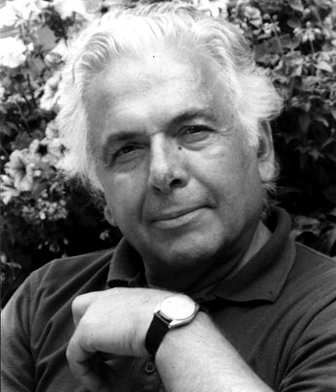|
|
| Golestan, Ebrahim
 |
Date of birth
19 October 1922, Shiraz, Iran
Date of death
22 August 2023, Sussex, United Kingdom
Mini biography
Ebrahim Golestan (October 19, 1922, Shiraz, Iran)
Director | Producer | Writer
Ebrahim Golestan: Lion of Iranian Cinema, The father of Iranian New Wave Cinema.
Of all the directors who worked in Iran prior to the 1979 Islamic revolution, Golestan, a legendary innovator and creative force in film and literature, inspires the most curiosity.
His films are not in distribution, and have not been seen in public for approximately 35 years.
Thanks now to the director himself, who emigrated to England in 1978, and to the cooperation of the Film Studies Center Archive at the University of Chicago, this body of work key to understanding the evolution of contemporary Iranian cinema may be seen.
Ebrahim Golestan was born in Shiraz, Iran, in 1922, to a family that owned a newspaper. After attending Tehran University, he quickly proved his talent in many fields, becoming known as a photographer, published writer of short stories, translator of western authors including Hemingway, Shaw, and Twain, and finally, filmmaker and producer.
The only filmmaker in Iran at the time to establish his own studio, he was the first to introduce advanced technology, including direct sound recording.
The Golestan Film Unit produced industrial shorts, in addition to independent auteur work including Golestan’s own feature films, THE BRICK AND THE MIRROR, and The Ghost Valley's Treasure Mysteries, and the seminal short film THE HOUSE IS BLACK, written and directed by one of Iran’s most revered poets, Forough Farrokhzad.
Even the commissioned shorts are distinguished by Golestan’s lyrical style, and by his metaphysical approach to subject matter like the production of oil.
A renowned intellectual, he attracted other writers and thinkers to the studio, which became known as a hub of creativity. Farrokhzad worked in several capacities including as the editor of Golestan’s short A FIRE (1961).
To contemplate the unprecedented realism and dark poetry of THE BRICK AND THE MIRROR, both a social statement and a drama of personal angst, and to appreciate the barbed comedy of dissent of The Ghost Valley's Treasure Mysteries, which aptly skewers the shah’s monarchy, is to see an important missing piece in the history of Iranian cinema fall into place.
In the films of Ebrahim Golestan, the lyrical imagery of Bahman Farmanara, the realist strategies of Mohsen Makhmalbaf, and the metaphysical depth of Abbas Kiarostami, each have some substantial precedent.
Golestan’s history as an innovator and a catalyst is a legacy that continues to resonate through Iranian cinema. -- Barbara Scharres
Filmography
1961 Yek atash (aka A Fire, documentary short)
1962 Moj, marjan, khara (documentary short)
1963 Tappe-haye Marlik (aka The Hills of Marlik, documentary short)
1965 Khesht va Ayeneh (aka Brick and Mirror)
1965 Ganjine-haye gohar (documentary short)
1974 Asrar ganj dareheye jenni (aka The Ghost Valley's Treasure Mysteries)
Director - Selected filmography
-
The Ghost Valley's Treasure Mysteries | Asrar ganj dareheye jenni (1974)
-
Harvest And Seed | Kharman va bazr (1965)
-
Brick and Mirror | Khesht va Ayeneh (1965)
-
The crown jewels of Iran | Ganjine-haye gohar (1965, Documentary, Short)
-
The Hills of Marlik | Tappe-haye Marlik (1963)
-
Courtship | Khastegari (1961)
-
Wave, Coral, and Rock | Moj, Marjan, Khara (1961, Documentary, Short)
-
A FIRE | YEK ATASH (1961)
|
|
|
| Choose an item to go there!
|
|

